
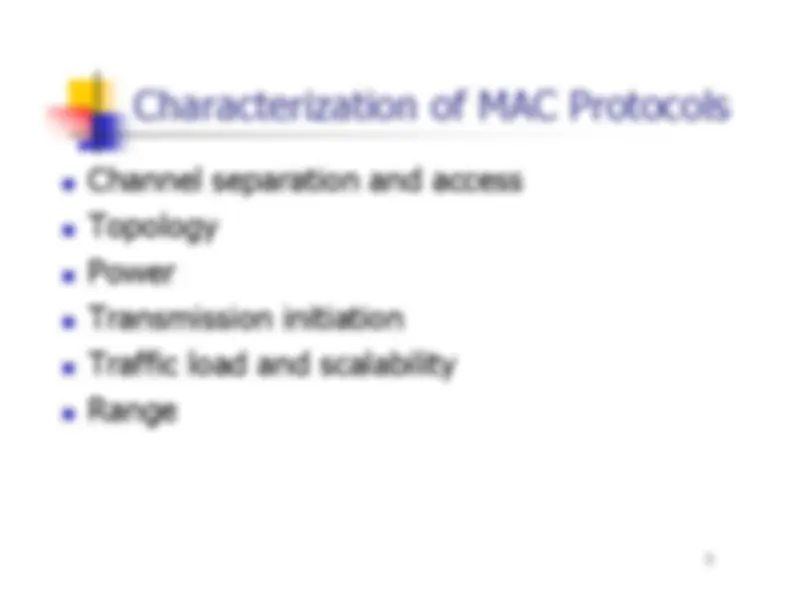
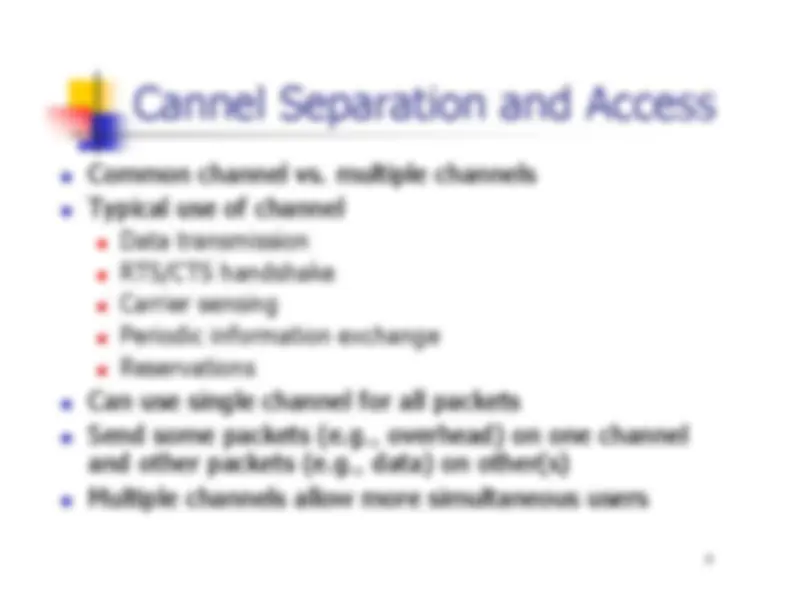
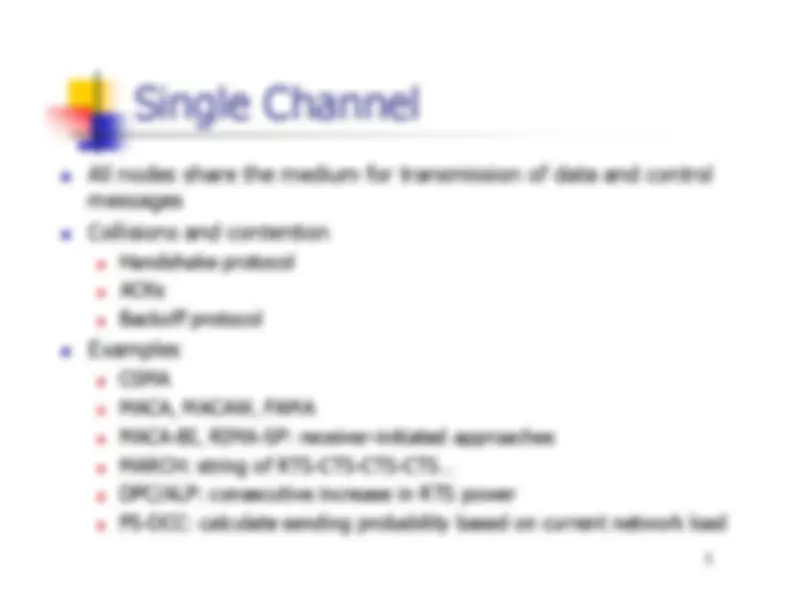
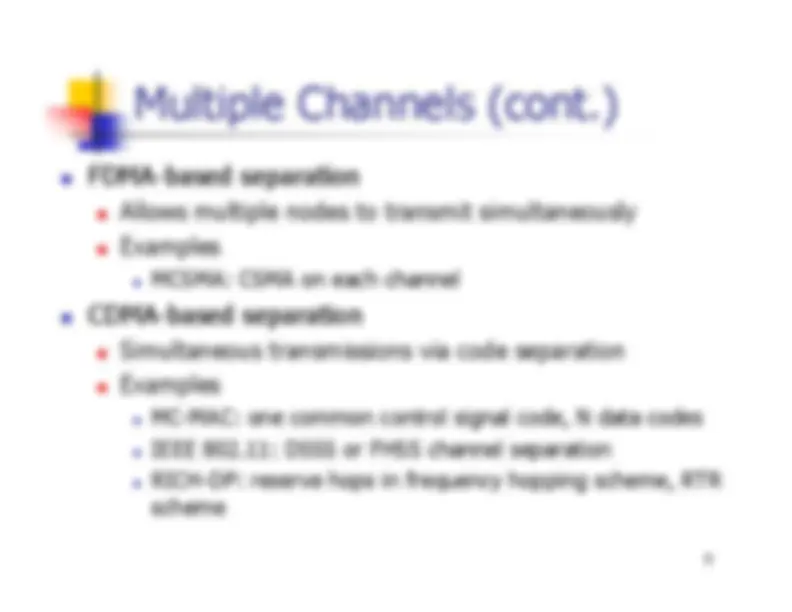
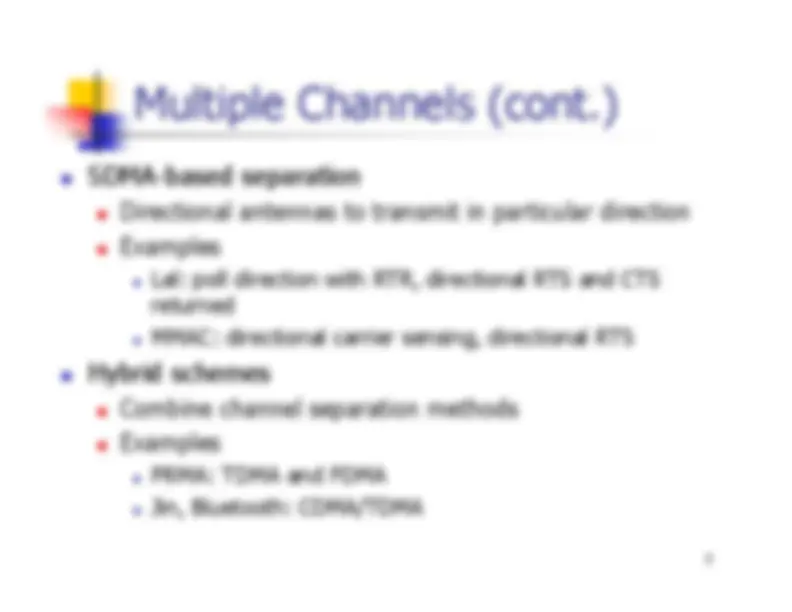
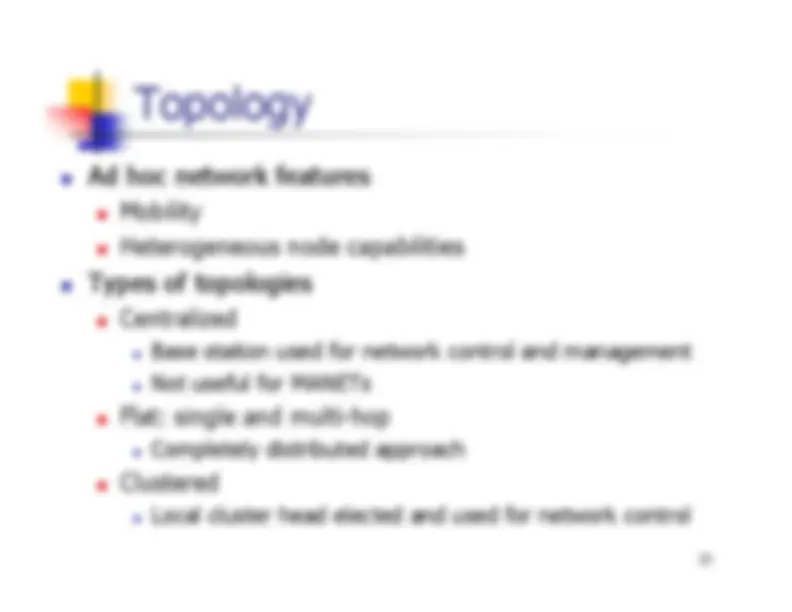

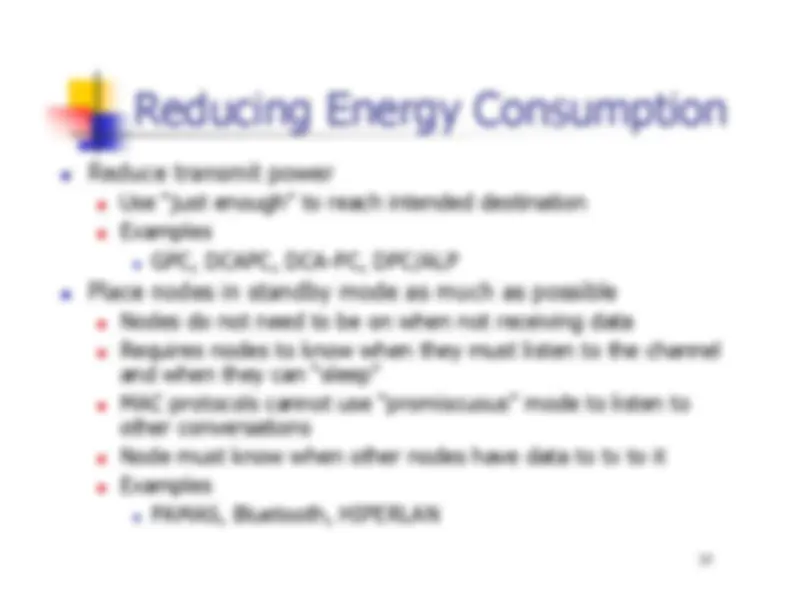
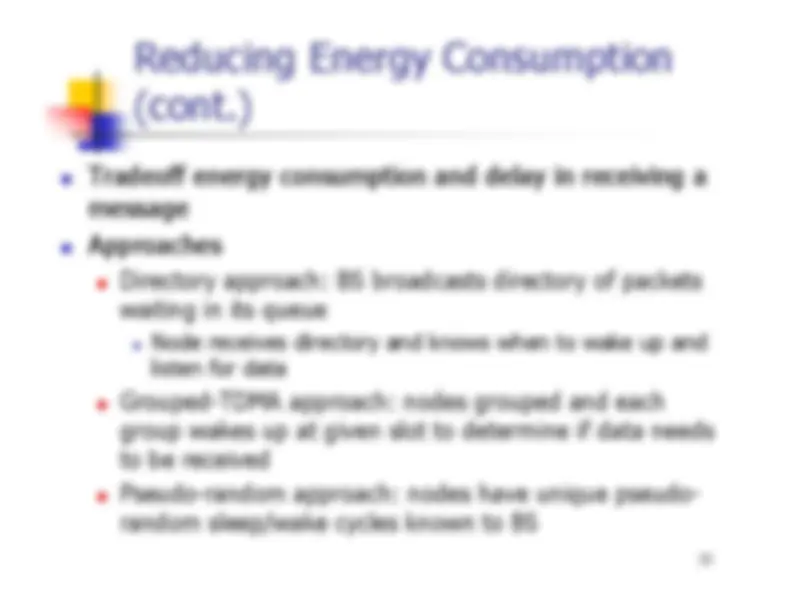
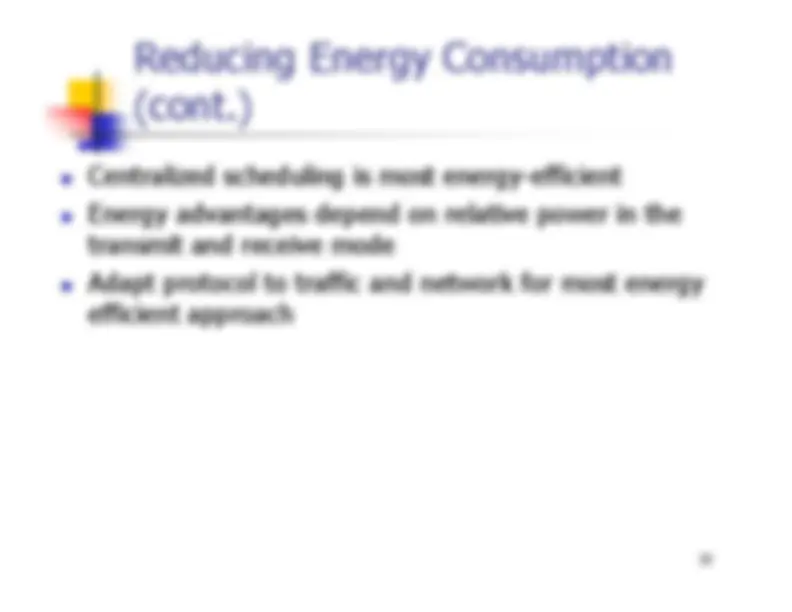
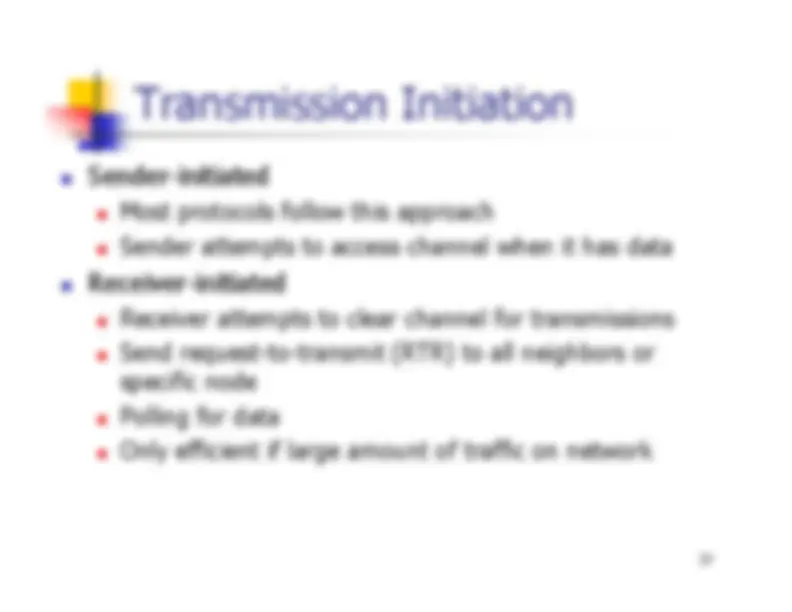
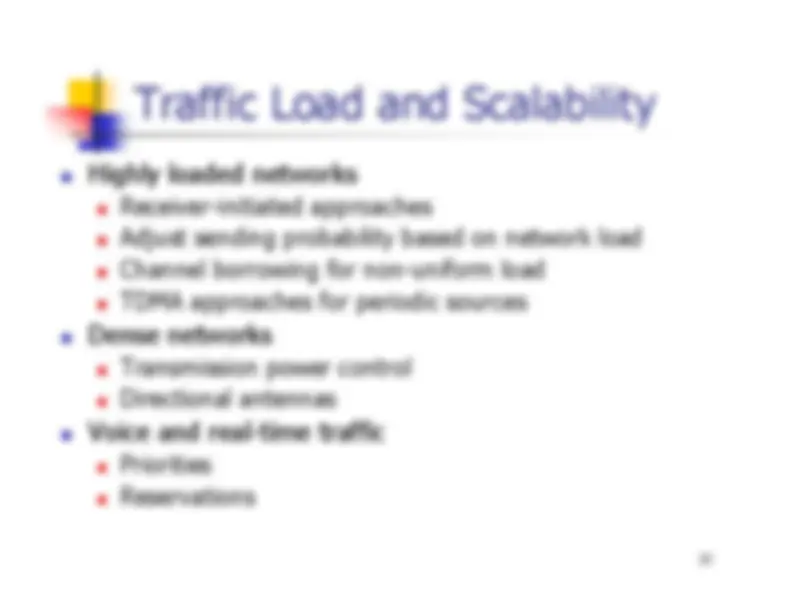
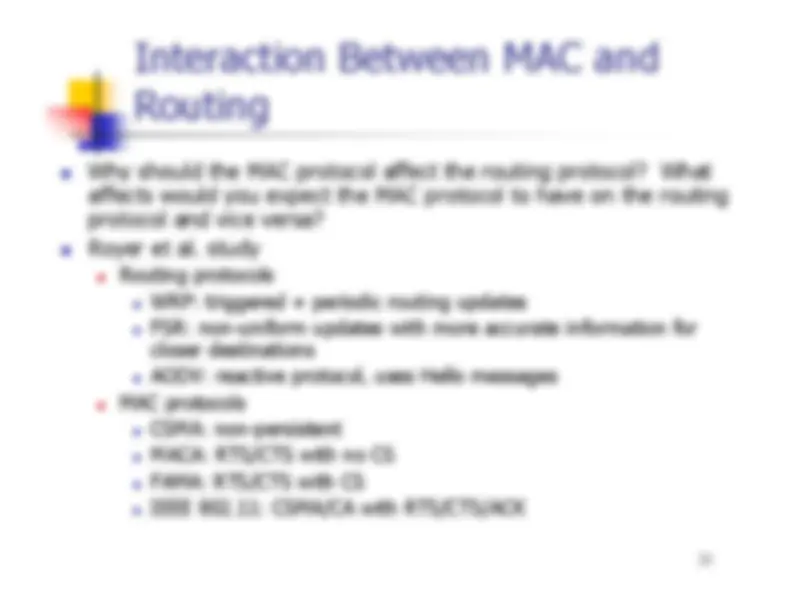
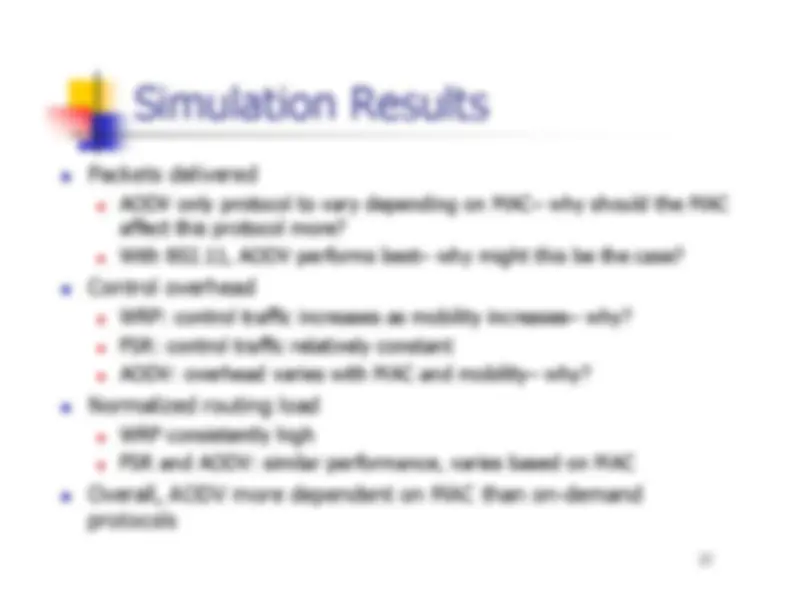


Study with the several resources on Docsity

Earn points by helping other students or get them with a premium plan


Prepare for your exams
Study with the several resources on Docsity

Earn points to download
Earn points by helping other students or get them with a premium plan
Community
Ask the community for help and clear up your study doubts
Discover the best universities in your country according to Docsity users
Free resources
Download our free guides on studying techniques, anxiety management strategies, and thesis advice from Docsity tutors
MAC Protocols, Cannel Separation, Access, Single Channel, Multiple Channels, Topology, Flat Topologies, Clustered Topologies, Power Consumption, Reducing Energy Consumption, Transmission, Initiation, Traffic Load, Scalability, MAC, Routing, Simulation Results
Typology: Slides
1 / 22

This page cannot be seen from the preview
Don't miss anything!















Reading: • “MAC Protocols for Ad Hoc Wireless Networks,” in Ad Hoc Wireless Networks: Architectures and Protocols, Chapter 6.
“A Survey, Classification and Comparative Analysis of Medium AccessControl Protocols for Ad Hoc Networks” by Raja Jurdak, Cristina VideiraLopes, and Pierre Baldi; University of California, Irvine,http://www.comsoc.org/livepubs/surveys/public/2004/jan/index.html - E. Royer, S.-J. Lee and C. Perkins, “The Effects of MAC Protocols on Ad hocNetwork Communication,” Proceedings of the IEEE Wireless Communications and Networking Conference (WCNC ’00), 2000.
Provide “rules” for channel access In MANETs, no centralized control Nodes independently determine access Local nodes elected to control channel access Nodes coordinate amongst themselves locally to determine channelaccess Goals for MAC protocols for MANETs High channel efficiency Low power Scalable Fair Support for prioritization Support for heterogeneous nodes Distributed operation QoS support Low control overhead
Data transmission RTS/CTS handshake Carrier sensing Periodic information exchange Reservations
All nodes share the medium for transmission of data and controlmessages Collisions and contention Handshake protocol ACKs Backoff protocol Examples CSMA MACA, MACAW, FAMA MACA-BI, RIMA-SP: receiver-initiated approaches MARCH: string of RTS-CTS-CTS-CTS… DPC/ALP: consecutive increase in RTS power PS-DCC: calculate sending probability based on current network load
Time segmented into frames, slots Nodes maintain synchronization Best with real-time, periodic data Examples FPRP, CATA, SRMA/PA: each slot has reservation andinformation subslots Markowski: traffic classes, window-splitting contentionresolution ADAPT: nodes “own” slots but others may use D-PRMA: continuous reservations for voice
Allows multiple nodes to transmit simultaneously Examples MCSMA: CSMA on each channel
Simultaneous transmissions via code separation Examples MC-MAC: one common control signal code, N data codes IEEE 802.11: DSSS or FHSS channel separation RICH-DP: reserve hops in frequency hopping scheme, RTRscheme
Mobility Heterogeneous node capabilities
Centralized Base station used for network control and management Not useful for MANETs Flat: single and multi-hop Completely distributed approach Clustered Local cluster head elected and used for network control
Local coordination via handshaking, carrier sensing
Scalability issues CSMA, MACA, FAMA, MACA-BI, RIMA-SP, 802.11, etc.
Can aid in scalability and power efficiency Most use multiple channels
MARCH: directly uses notion of multi-hop path
Radio operates in 3 modes: transmit, receive, standby Relative powers P TX
P RX
P
SB for long-range communication P TX ~ P RX
P SB for short-range, low power transceivers Different MAC protocols will be “low-power” depending onmodel of transceiver power dissipation Time delay and power dissipation switching between states
Reduce transmit power Use “just enough” to reach intended destination Examples GPC, DCAPC, DCA-PC, DPC/ALP Place nodes in standby mode as much as possible Nodes do not need to be on when not receiving data Requires nodes to know when they must listen to the channeland when they can “sleep” MAC protocols cannot use “promiscuous” mode to listen toother conversations Node must know when other nodes have data to tx to it Examples PAMAS, Bluetooth, HIPERLAN
Retransmissions expend energy Introduce delays Reduce number of ACKs required Use contention for reservations and contention-free fordata transmission
Avoids power/time in switching from Tx to Rx
Allows node to remain asleep for long time Trade-off in delay to receive packets and buffer size
Choose cluster head to have plenty of energy Give nodes with low energy priority in contention Examples WCA, DPC/ALP, Jin GPC
Need control to avoid collisions, but reduce as much aspossible Examples MARCH
Most protocols follow this approach Sender attempts to access channel when it has data
Receiver attempts to clear channel for transmissions Send request-to-transmit (RTR) to all neighbors orspecific node Polling for data Only efficient if large amount of traffic on network
Receiver-initiated approaches Adjust sending probability based on network load Channel borrowing for non-uniform load TDMA approaches for periodic sources
Transmission power control Directional antennas
Priorities Reservations